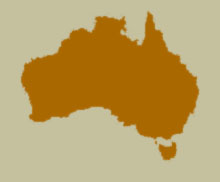Synonyms
Bucolus dolambiorum Slipinski and Dolambi, 2007:767.
Diagnosis
The elongate metallic blue dorsum in combination with the orange elytral apices and very short, stout antenna distinguish this species from other Bucolus.
Description
Length 3.0-3.5 mm. Head, pronotum and most of the ventral side black; elytra with distinct bluish metallic tinge; mouthparts, antennae, tarsi and abdomen brown. Dorsum moderately convex, covered with rather short, whitish pubescence not forming whorled pattern on elytra. Punctures on head distinctly finer than eye facets, separated by 1.0-2.0 diameters; intervals between punctures shiny without microsculpture. Anterior clypeal margin deeply and broadly arcuate. Antenna short and stout with almost symmetrical club. Apical maxillary palpomere, very short and broad. Eyes weakly emarginate; at frons separated by about 2.2 times eye width. Pronotal base not margined; prosternum long in front of procoxae with distinct and forward oriented projection that is about 0.6 times as broad as prosternum. Prosternal process 0.5 times as wide as transverse coxal diameter. Hypomeron deeply concave but without distinct foveae. Scutellum triangular, setose. Elytral surface densely, irregularly punctate; all punctures of similar size, setigerous and 2-3 diameters apart; interspaces shiny and without noticeable microsculpture. Epipleuron about as broad as metepisternum, strongly narrowing posteriorly from the level of abdomen and completely absent apically. Foveae well defined; the mesofemoral fovea visible both on metepisternum and epipleuron; the metafemoral one deeply delimited on very narrow epipleuron. Meso-metaventral junction about as wide as mesocoxa; mesoventrite straight and bordered anteriorly. Protibia short and broad, weakly emarginate along external margin of deep tarsal groove; mid and hind tibiae similar, narrower and sharply angulated externally; claws in male appendiculate with basal tooth prominent and almost as long as claw (claw appear to be split). Abdominal postcoxal line recurved and incomplete; ventrite V straight or weakly arcuate.
Male
Male genitalia as figured.
Female
Externally idential to male.
Variation
Not observed.
 Distribution and Biology
Distribution and Biology
Known from a few localities in northern Queensland.
Species References
Slipinski, A and Dolambi, F. 2007. Revision of the Australian Coccinellidae (Coleoptera). Part 7. Genus Bucolus Mulsant. Annales Zoologici (Warszawa), 57: 763-781.
[ Top ]
